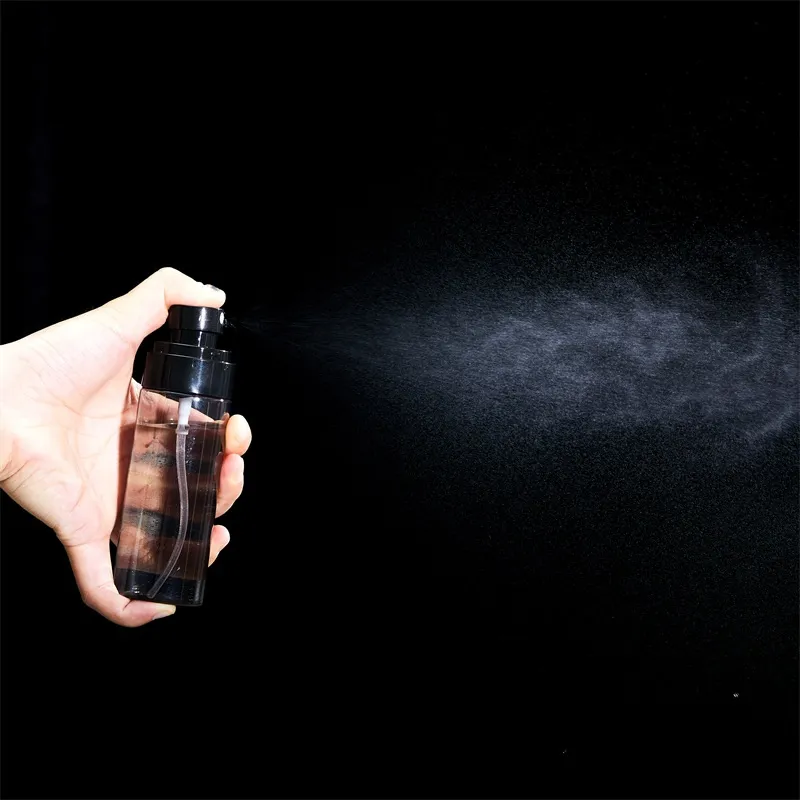Magnesium Chloride in Cosmetics: A Closer Look
Time:2025-07-18
In the world of cosmetics, a wide array of ingredients work together to create products that beautify, protect, and enhance our skin and hair. One such ingredient that has gained significant prevalence is magnesium chloride. This inorganic compound, with the chemical formula MgCl₂, is playing an increasingly important role in the formulation of various beauty products.
What is Magnesium Chloride?
Magnesium chloride is a colorless crystalline solid that is highly soluble in water and alcohol. It exists in nature in various forms, such as in seawater, salt lakes, and certain minerals. In its hydrated state, it often appears as MgCl₂·6H₂O, which is a common form used in many applications, including cosmetics. It has a cubic close - packing structure with alternate layers of octahedral holes occupied by Mg²⁺ ions.

Ubiquitous Presence in Cosmetics
The use of magnesium chloride in cosmetics is remarkably widespread. It can be found in a diverse range of products, from shampoos and body washes to creams and lotions. In shampoos, it often serves as a stabilizer. It works in tandem with other ingredients like preservatives, such as the combination of methylchloroisothiazolinone and methylisothiazolinone (commonly known as "Kathon"), to inhibit the growth of bacteria and molds, thereby extending the product's shelf life. For example, in many well - known shampoo brands, magnesium chloride helps maintain the integrity of the formula over time.
In body washes and shower gels, magnesium chloride can act as a pH adjuster. By regulating the pH level of the product, it ensures that the wash is gentle on the skin and does not disrupt the skin's natural acidic mantle. This is crucial as an improper pH can lead to skin dryness, irritation, or other issues. Additionally, it can enhance the foaming properties of these products, creating a rich and luxurious lather that consumers often associate with high - quality body washes.
Even in skincare products like moisturizers and facial creams, magnesium chloride has a place. It can function as a humectant, attracting and retaining moisture in the product. This property helps to keep the cream smooth and prevents it from drying out, ensuring that it remains effective and pleasant to use over an extended period.
Multiple Functions in Cosmetic Formulations
Texture and Viscosity Control
One of the primary functions of magnesium chloride in cosmetics is to control the texture and viscosity of products. In lotions and creams, it can interact with other ingredients, such as thickeners like guar gum, cellulose, or gums. By doing so, it helps to create a consistent and desirable texture. For instance, in a thick, rich body butter, magnesium chloride can work with the natural waxes and oils to make the product spreadable yet firm enough to stay in the container without separating.
Enhancing Product Stability
As mentioned earlier, magnesium chloride contributes significantly to the stability of cosmetic products. It can prevent the separation of different components in emulsions, which are mixtures of oil and water that are commonly found in many beauty products. In a facial cleanser that contains both oil - soluble and water - soluble ingredients, magnesium chloride helps to keep these two phases evenly dispersed, ensuring that the product remains homogenous and effective throughout its shelf life.
Moisture - Related Benefits
Magnesium chloride has hygroscopic properties, meaning it can attract and hold moisture. In cosmetics, this can be beneficial in two ways. First, for the product itself, it helps to maintain its moisture content, preventing it from drying out. Second, when applied to the skin, it can potentially enhance the skin's moisture - retaining ability. Some studies have suggested that in combination with other ingredients like hyaluronic acid, magnesium chloride may help to increase the penetration of hyaluronic acid into the skin's deeper layers, thereby improving skin hydration.

Precautions for Consumers
While magnesium chloride is generally considered safe for use in cosmetics when used within the recommended limits, there are some precautions that consumers should be aware of.
Skin Sensitivity
Some individuals may be sensitive or allergic to magnesium chloride. People with sensitive skin should exercise caution when using products containing this ingredient. Symptoms of an allergic reaction may include skin redness, itching, rash, or in severe cases, swelling. It is advisable for those with known skin sensitivities to perform a patch test before using a new cosmetic product that contains magnesium chloride. Apply a small amount of the product to a small area of skin, such as the inner forearm, and wait for 24 - 48 hours to see if any adverse reactions occur.
Follow Usage Instructions
Consumers should always follow the usage instructions provided on the product label. Over - application of products containing magnesium chloride, especially in the case of leave - on products like creams and lotions, may increase the risk of skin irritation. For example, using a shampoo that contains magnesium chloride more frequently than recommended may strip the hair and scalp of their natural oils, leading to dryness and potential irritation.
In conclusion, magnesium chloride is a versatile and widely used ingredient in the cosmetics industry. It plays essential roles in product stability, texture, and moisture management. However, as with any ingredient, consumers should be informed and take necessary precautions to ensure safe and effective use of their beauty products.
In the world of cosmetics, a wide array of ingredients work together to create products that beautify, protect, and enhance our skin and hair. One such ingredient that has gained significant prevalence is magnesium chloride. This inorganic compound, with the chemical formula MgCl₂, is playing an increasingly important role in the formulation of various beauty products.
What is Magnesium Chloride?
Magnesium chloride is a colorless crystalline solid that is highly soluble in water and alcohol. It exists in nature in various forms, such as in seawater, salt lakes, and certain minerals. In its hydrated state, it often appears as MgCl₂·6H₂O, which is a common form used in many applications, including cosmetics. It has a cubic close - packing structure with alternate layers of octahedral holes occupied by Mg²⁺ ions.

Ubiquitous Presence in Cosmetics
The use of magnesium chloride in cosmetics is remarkably widespread. It can be found in a diverse range of products, from shampoos and body washes to creams and lotions. In shampoos, it often serves as a stabilizer. It works in tandem with other ingredients like preservatives, such as the combination of methylchloroisothiazolinone and methylisothiazolinone (commonly known as "Kathon"), to inhibit the growth of bacteria and molds, thereby extending the product's shelf life. For example, in many well - known shampoo brands, magnesium chloride helps maintain the integrity of the formula over time.
In body washes and shower gels, magnesium chloride can act as a pH adjuster. By regulating the pH level of the product, it ensures that the wash is gentle on the skin and does not disrupt the skin's natural acidic mantle. This is crucial as an improper pH can lead to skin dryness, irritation, or other issues. Additionally, it can enhance the foaming properties of these products, creating a rich and luxurious lather that consumers often associate with high - quality body washes.
Even in skincare products like moisturizers and facial creams, magnesium chloride has a place. It can function as a humectant, attracting and retaining moisture in the product. This property helps to keep the cream smooth and prevents it from drying out, ensuring that it remains effective and pleasant to use over an extended period.
Multiple Functions in Cosmetic Formulations
Texture and Viscosity Control
One of the primary functions of magnesium chloride in cosmetics is to control the texture and viscosity of products. In lotions and creams, it can interact with other ingredients, such as thickeners like guar gum, cellulose, or gums. By doing so, it helps to create a consistent and desirable texture. For instance, in a thick, rich body butter, magnesium chloride can work with the natural waxes and oils to make the product spreadable yet firm enough to stay in the container without separating.
Enhancing Product Stability
As mentioned earlier, magnesium chloride contributes significantly to the stability of cosmetic products. It can prevent the separation of different components in emulsions, which are mixtures of oil and water that are commonly found in many beauty products. In a facial cleanser that contains both oil - soluble and water - soluble ingredients, magnesium chloride helps to keep these two phases evenly dispersed, ensuring that the product remains homogenous and effective throughout its shelf life.
Moisture - Related Benefits
Magnesium chloride has hygroscopic properties, meaning it can attract and hold moisture. In cosmetics, this can be beneficial in two ways. First, for the product itself, it helps to maintain its moisture content, preventing it from drying out. Second, when applied to the skin, it can potentially enhance the skin's moisture - retaining ability. Some studies have suggested that in combination with other ingredients like hyaluronic acid, magnesium chloride may help to increase the penetration of hyaluronic acid into the skin's deeper layers, thereby improving skin hydration.

Precautions for Consumers
While magnesium chloride is generally considered safe for use in cosmetics when used within the recommended limits, there are some precautions that consumers should be aware of.
Skin Sensitivity
Some individuals may be sensitive or allergic to magnesium chloride. People with sensitive skin should exercise caution when using products containing this ingredient. Symptoms of an allergic reaction may include skin redness, itching, rash, or in severe cases, swelling. It is advisable for those with known skin sensitivities to perform a patch test before using a new cosmetic product that contains magnesium chloride. Apply a small amount of the product to a small area of skin, such as the inner forearm, and wait for 24 - 48 hours to see if any adverse reactions occur.
Follow Usage Instructions
Consumers should always follow the usage instructions provided on the product label. Over - application of products containing magnesium chloride, especially in the case of leave - on products like creams and lotions, may increase the risk of skin irritation. For example, using a shampoo that contains magnesium chloride more frequently than recommended may strip the hair and scalp of their natural oils, leading to dryness and potential irritation.
In conclusion, magnesium chloride is a versatile and widely used ingredient in the cosmetics industry. It plays essential roles in product stability, texture, and moisture management. However, as with any ingredient, consumers should be informed and take necessary precautions to ensure safe and effective use of their beauty products.
Previous: No more data

